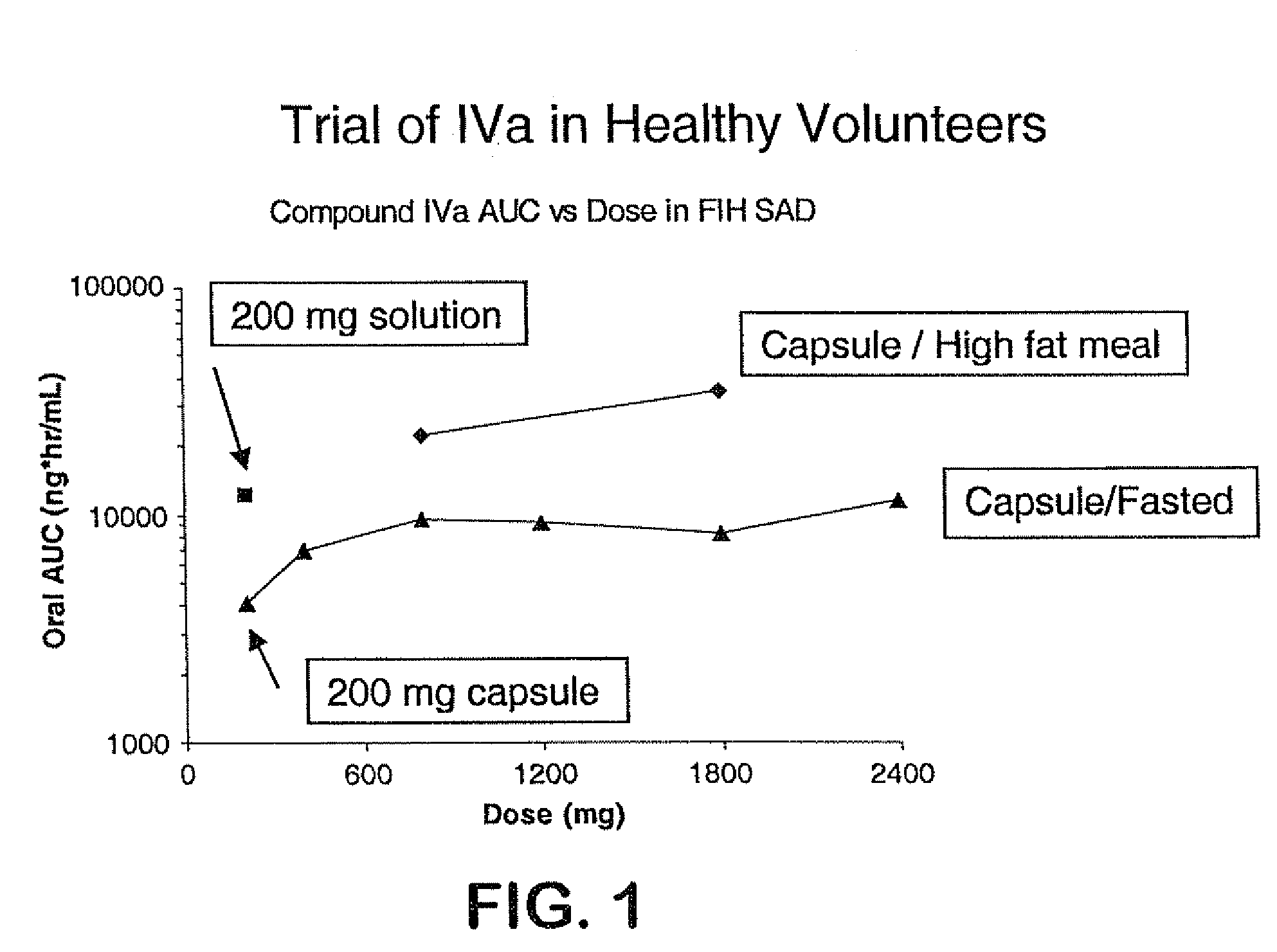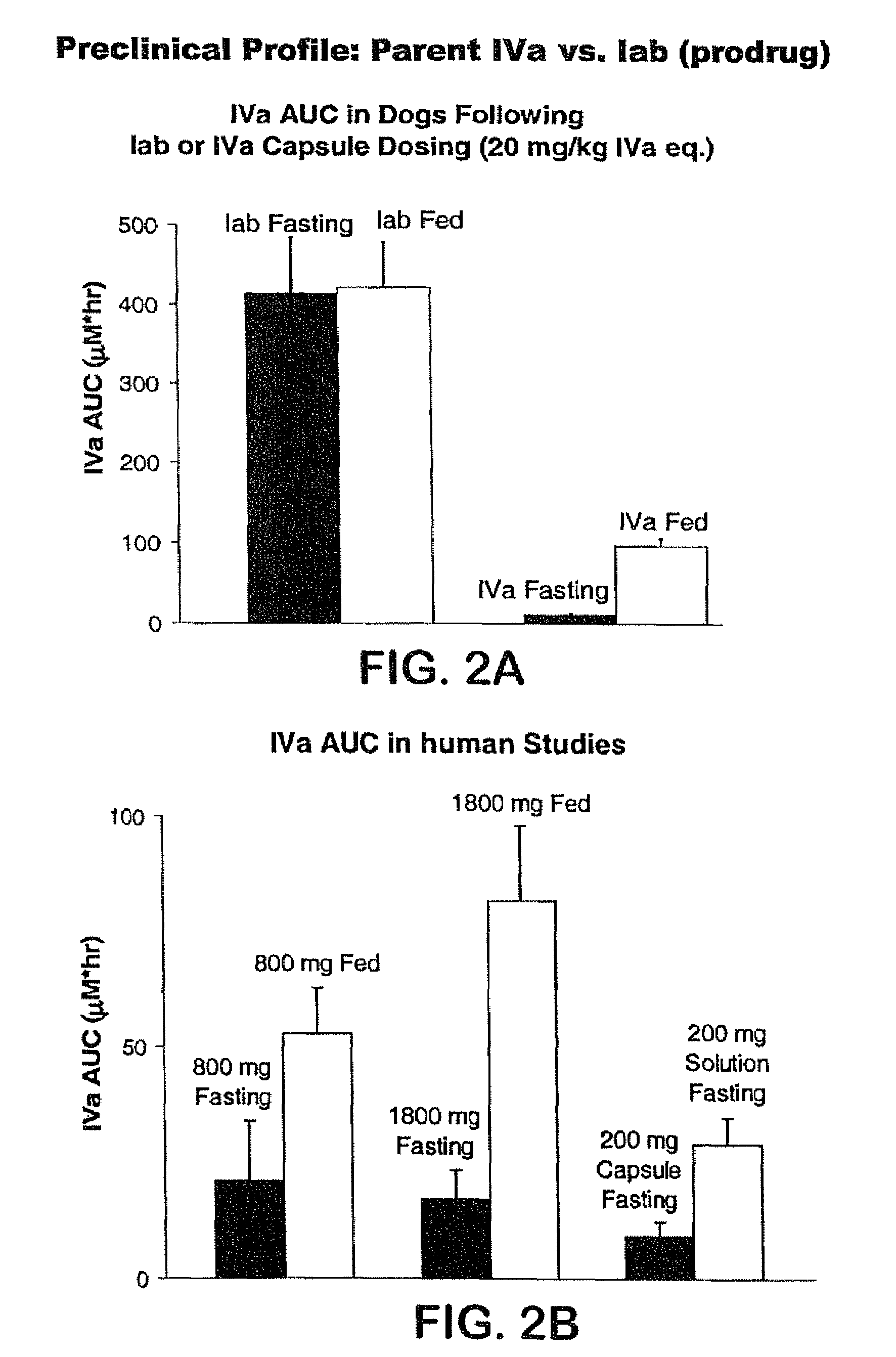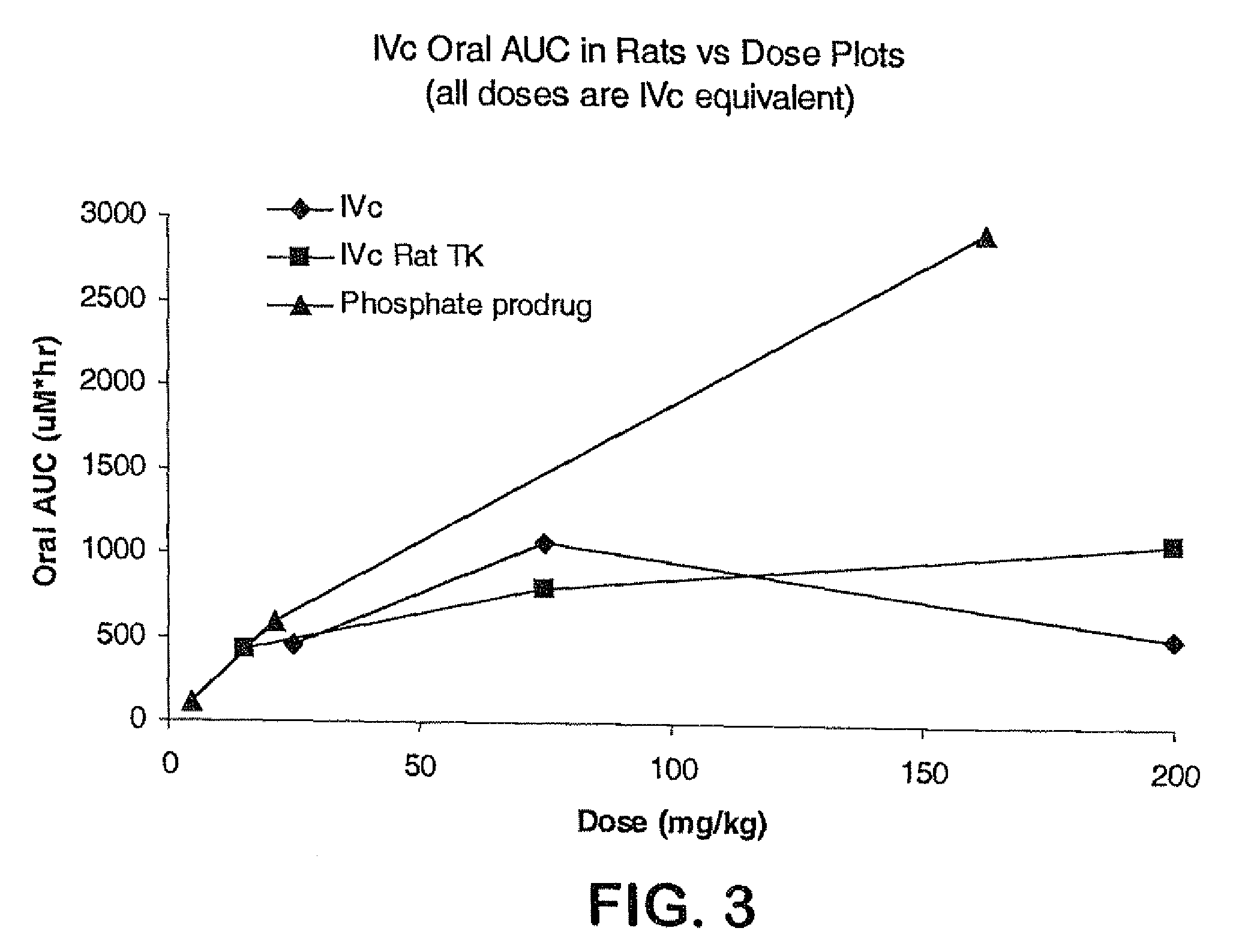Prodrugs of piperazine and substituted piperidine antiviral agents
a technology of piperazine and antiviral agent, which is applied in the field of compounds, can solve the problems of affecting the treatment effect of combination drug therapies, affecting the treatment effect of patients, so as to improve the exposure of molecules, reduce the burden of capsules, and improve the effect of drug resistan
- Summary
- Abstract
- Description
- Claims
- Application Information
AI Technical Summary
Benefits of technology
Problems solved by technology
Method used
Image
Examples
examples 1-4
Preparation of Prodrugs I from Parent Compounds IV
Synthetic Scheme for Examples 1-4
[0543]
example 1
Preparation of Ia
[0544]
Procedure: A suspension of IVa (211 mg, 0.5 mmol) in THF (2 mL; Sure Seal) under anhydrous N2 atmosphere was treated with NaH (86 mg, 2.2 mmol; 4.4 eq.; 60% oil dispersion). After a few minutes stirring at room temperature, di-tert-butyl chloromethyl phosphate (782 mg, 3.0 mmol; preparation, see U.S. Pat. No. 6,362,172) was added and the mixture stirred for 1-5 days, monitoring the completion of the reaction by HPLC (additional 1-2 eq. of each NaH and the phosphate may be required to bring the reaction to near completion). After the staring material was consumed, the mixture was concentrated in vacuo to dryness and the residue, which appeared to be a mixture of N-alkylated indole mono- and bis-t-butyl phosphate, was dissolved in CH2Cl2 (5 mL) was treated with TFA (5 mL) at room temperature for 2 h. The mixture was concentrated in vacuo and the residue was purified by C-18 reverse phase silica gel, eluting with 5-10% CH3CN in water containing NaHCO3, to obtain ...
example 2
[0546]
Ib: Yield 13% (disodium salt); HPLC >96% (AP at 254 nm); LC / MS (ESI+) m / z 558 (M+H minus 2Na)+; 1H NMR (D2O, 500 MHz) δ ppm 3.59 (2H, m), 3.70-3.84 (4H, m), 3.93-3.95 (2H, m), 5.28-5.29-5.30-5.32 (2H, ABq.), 7.4-7.6 (5H, m), 8.09, 8.10 (1H, 2s), 8.34, 8.36 (1H, 2s), 8.59, 8.61 (1H, 2s), 8.72, 8.75 (1H, 2s).
PUM
| Property | Measurement | Unit |
|---|---|---|
| temperature | aaaaa | aaaaa |
| concentration | aaaaa | aaaaa |
| concentration | aaaaa | aaaaa |
Abstract
Description
Claims
Application Information
 Login to View More
Login to View More - R&D
- Intellectual Property
- Life Sciences
- Materials
- Tech Scout
- Unparalleled Data Quality
- Higher Quality Content
- 60% Fewer Hallucinations
Browse by: Latest US Patents, China's latest patents, Technical Efficacy Thesaurus, Application Domain, Technology Topic, Popular Technical Reports.
© 2025 PatSnap. All rights reserved.Legal|Privacy policy|Modern Slavery Act Transparency Statement|Sitemap|About US| Contact US: help@patsnap.com



